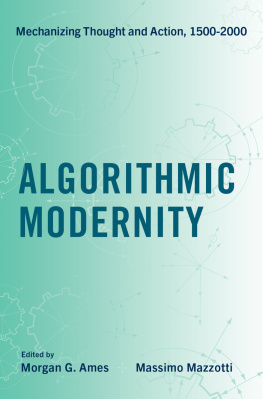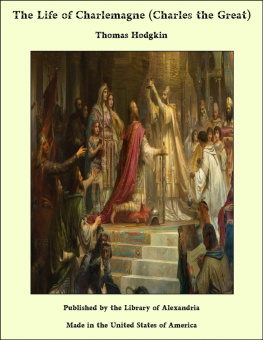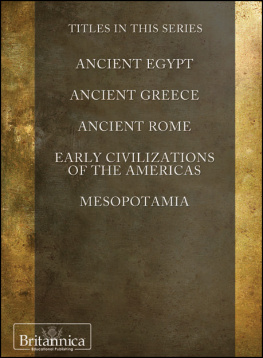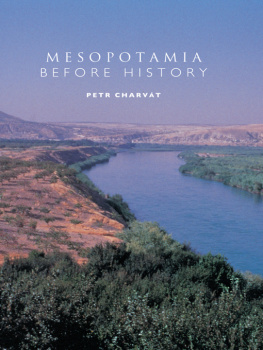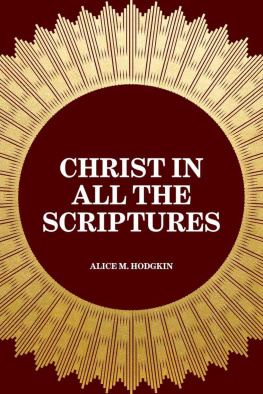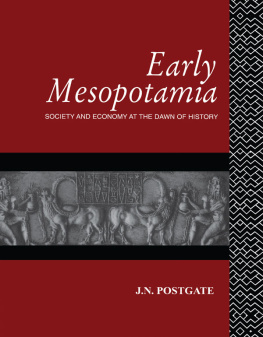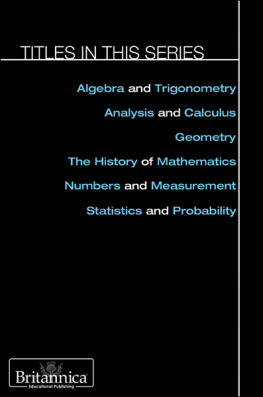Hodgkin - A history of mathematics: from Mesopotamia to modernity
Here you can read online Hodgkin - A history of mathematics: from Mesopotamia to modernity full text of the book (entire story) in english for free. Download pdf and epub, get meaning, cover and reviews about this ebook. City: Oxford, year: 2013;2005, publisher: Oxford University Press USA - OSO, genre: Religion. Description of the work, (preface) as well as reviews are available. Best literature library LitArk.com created for fans of good reading and offers a wide selection of genres:
Romance novel
Science fiction
Adventure
Detective
Science
History
Home and family
Prose
Art
Politics
Computer
Non-fiction
Religion
Business
Children
Humor
Choose a favorite category and find really read worthwhile books. Enjoy immersion in the world of imagination, feel the emotions of the characters or learn something new for yourself, make an fascinating discovery.

- Book:A history of mathematics: from Mesopotamia to modernity
- Author:
- Publisher:Oxford University Press USA - OSO
- Genre:
- Year:2013;2005
- City:Oxford
- Rating:5 / 5
- Favourites:Add to favourites
- Your mark:
- 100
- 1
- 2
- 3
- 4
- 5
A history of mathematics: from Mesopotamia to modernity: summary, description and annotation
We offer to read an annotation, description, summary or preface (depends on what the author of the book "A history of mathematics: from Mesopotamia to modernity" wrote himself). If you haven't found the necessary information about the book — write in the comments, we will try to find it.
Hodgkin: author's other books
Who wrote A history of mathematics: from Mesopotamia to modernity? Find out the surname, the name of the author of the book and a list of all author's works by series.
A history of mathematics: from Mesopotamia to modernity — read online for free the complete book (whole text) full work
Below is the text of the book, divided by pages. System saving the place of the last page read, allows you to conveniently read the book "A history of mathematics: from Mesopotamia to modernity" online for free, without having to search again every time where you left off. Put a bookmark, and you can go to the page where you finished reading at any time.
Font size:
Interval:
Bookmark:
From Mesopotamia to Modernity
Luke Hodgkin


Great Clarendon Street, Oxford OX2, 6DP,
United Kingdom
Oxford University Press is a department of the University of Oxford.
It furthers the Universitys objective of excellence in research, scholarship,
and education by publishing worldwide. Oxford is a registered trade mark of
Oxford University Press in the UK and in certain other countries
Oxford University Press, 2005
The moral rights of the author have been asserted
First Published 2005
First published in paperback 2013
Impression: 1
All rights reserved. No part of this publication may be reproduced, stored in
a retrieval system, or transmitted, in any form or by any means, without the
prior permission in writing of Oxford University Press, or as expressly permitted
by law, by licence or under terms agreed with the appropriate reprographics
rights organization. Enquiries concerning reproduction outside the scope of the
above should be sent to the Rights Department, Oxford University Press, at the
address above
You must not circulate this work in any other form
and you must impose this same condition on any acquirer
British Library Cataloguing in Publication Data
Data available
ISBN 9780198529378 (Hbk.)
ISBN 9780199676767 (Pbk.)
Printed in Great Britain by
Antony Rowe Ltd., Chippenham, Wiltshire
This book has its origin in notes which I compiled for a course on the history of mathematics at Kings College London, taught for many years before we parted company. My major change in outlook (which is responsible for its form) dates back to a day ten years ago at the University of Warwick, when I was comparing notes on teaching with the late David Fowler. He explained his own history of mathematics course to me; as one might expect, it was detailed, scholarly, and encouraged students to do research of their own, particularly on the Greeks. I told him that I gave what I hoped was a critical account of the whole history of mathematics in a series of lectures, trying to go beyond what they would find in a textbook. David was scornful. What, he said, do you mean that you stand up in front of those students and tell stories? I had to acknowledge that I did.
Davids approach meant that students should be taught from the start not to accept any story at face value, and to be interested in questions rather than narrative. Its certainly desirable as regards the Greeks, and its a good approach in general, even if it may sometimes seem too difficult and too purist. I hope he would not be too hard on my attempts at a compromise. The aims of the book in this, its ultimate form, are set out in the introduction; briefly, I hope to introduce students to the history, or histories of mathematics as constructions which we make to explain the texts which we have, and to relate them to our own ideas. Such constructions are often controversial, and always provisional; but that is the nature of history.
The original impulse to write came from David Robinson, my collaborator on the course at Kings, who suggested (unsuccessfully) that I should turn my course notes into a book; and providentially from Alison Jones of the Oxford University Press, who turned up at Kings when I was at a loose end and asked if I had a book to publish. I produced a proposal; she persuaded the press to accept it and kept me writing. Without her constant feedback and involvement it would never have been completed.
I am grateful to a number of friends for advice and encouragement. Jeremy Gray read an early draft and promoted the project as a referee; the reader is indebted to him for the presence of exercises. Geoffrey Lloyd gave expert advice on the Greeks; I am grateful for all of it, even if I only paid attention to some. John Cairns, Felix Pirani and Gervase Franklin read parts of the manuscript and made helpful comments; various friends and relations, most particularly Jack Goody, John Hope, Jessica Hines and Sam and Joe Gold Hodgkin expressed a wish to see the finished product.
Finally, Im deeply grateful to my wife Jean who has supported the project patiently through writing and revision. To her, and to my father Thomas who I hope would have approved, this book is dedicated.
This book was written seven years ago. Its frankly not a research text, but in putting it together I used the best sources available at the time. However, research moves on, and of course a number of scholars have published important new texts in the field. Rather than rewrite the bibliography, Ill just mention two recent general works which are (in my view) essential:
Robson, Eleanor, and Stedall, Jacqueline (2009). The Oxford Handbook of the History of Mathematics. Oxford: OUP.
Katz, V. J. (ed.) (2007). The Mathematics of Egypt, Mesopotamia, China, India, and Islam:A Sourcebook. Princeton: Princeton University Press.
These two books will in turn provide you with bibliographies leading you to further reading.
I enjoyed writing this book, and I have been grateful for feedback from the students, colleagues and friends who have read it. I hope that the issue of a paperback makes it more accessible to the many.
Introduction
Chapter 1. Babylonian mathematics
Chapter 2. Greeks and origins
Chapter 3. Greeks, practical and theoretical
Chapter 4. Chinese mathematics
Chapter 5. Islam, neglect and discovery
Chapter 6. Understanding the scientific revolution
Chapter 7. The calculus
Chapter 8. Geometries and space
Chapter 9. Modernity and its anxieties
Chapter 10. A chaotic end?
The author thanks the following for permission to reproduce figures and illustrations in this text:
The Schyen Collection, Oslo and London, for tablet MS1844 (.
Every effort has been made to contact and acknowledge the copyright owners of all figures and illustrations presented in this text, any omissions will be gladly rectified.
[M. de Montmort] was working for some time on the History of Geometry. Every Science, every Art, should have its own. It gives great pleasure, which is also instructive, to see the path which the human spirit has taken, and (to speak geometrically) this kind of progression, whose intervals are at first extremely long, and afterwards naturally proceed by becoming always shorter. (Fontenelle 1969, p. 77)
With so many histories of mathematics already on the shelves, to undertake to write another calls for some justification. Montmort, the first modern mathematician to think of such a project (even if he never succeeded in writing it) had a clear Enlightenment aim: to display the accelerating progress of the human spirit through its discoveries. This ideathat history is the record of a progress through successive less enlightened ages up to the presentis usually called Whig history in Anglo-Saxon countries, and is not well thought of. Nevertheless, in the eighteenth century, even if one despaired of human progress in general, the sciences seemed to present a good case for such a history, and the tradition has survived longer there than elsewhere. The first true historian of mathematics, Jean tienne Montucla, underlined the point by contrasting the history of mathematical discovery with that which we more usually read:
Font size:
Interval:
Bookmark:
Similar books «A history of mathematics: from Mesopotamia to modernity»
Look at similar books to A history of mathematics: from Mesopotamia to modernity. We have selected literature similar in name and meaning in the hope of providing readers with more options to find new, interesting, not yet read works.
Discussion, reviews of the book A history of mathematics: from Mesopotamia to modernity and just readers' own opinions. Leave your comments, write what you think about the work, its meaning or the main characters. Specify what exactly you liked and what you didn't like, and why you think so.

